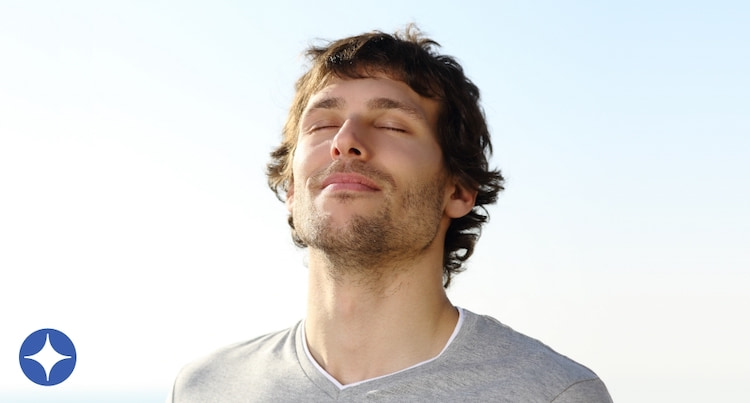
Learn more about SoClean 3 for advanced sleep equipment maintenance!
Of the several million Americans[1] with a sleep disorder, approximately 8 million people[2] rely on sleep equipment for better quality sleep. The use of sleep equipment has been linked to an overall enhanced quality of life[3] and a lowered risk of several medical conditions[4].
Unfortunately, despite the harmful impacts[5] of untreated sleep disorders, people may quit sleep therapy[6] for various reasons. Adhering to recommended sleep therapy[7] use is an important part of treatment for many sleep disorder sufferers, so it's vital that users do everything they can to make their sleep therapy experience positive[8]. This includes practicing good sleep routines[9] and maintaining sleep equipment to a high standard. Combating stinky equipment is a crucial way of increasing sleep therapy comfort and hygiene. Here are common reasons your equipment might smell bad and what you can do about it.
Dirty Equipment Parts
Because the skin[10] is naturally covered in dead cells, bacteria and oily or waxy sebum[11], these can easily transfer to your sleep equipment parts. This dirt buildup is prone to causing an unpleasant smell. In addition to creating a nasty whiff, dirt on equipment parts can also affect the seal and irritate the skin on your face.
To reduce dirt buildup, you should always thoroughly clean your face before bed, making sure you remove all cosmetics and soap residue. Some people find that regular exfoliation[12] can help, too. Additionally, you should avoid using nighttime facial moisturizers and other skin care products.
You also need to keep your equipment clean. Wiping[13] your equipment down after each use removes surface dirt, while proper soap and water cleaning should tackle deeper grime. Also, make sure you replace your sleep equipment parts regularly.
Dirty Filter
The sleep equipment filter traps dust, mold, pollen and other allergens in the air and acts as a barrier to prevent them from reaching your lungs. As filters do their job, they accumulate a buildup of trapped particles, which can cause a foul odor. Blocked filters may smell musty, and you may be able to see dirt on the filter.
Regularly changing the filter per manufacturers' guidelines is vital for maintaining optimum hygiene and performance. Additionally, reusable filters should be rinsed regularly.
Stagnant Water
Water left in the machine's reservoir can quickly stagnate[14] if not changed regularly. Stagnant water often smells like rotten eggs. As well as smelling unpleasant, stagnant water is often a breeding ground for bacteria and algae[15], both of which can increase bad smells and health risks. You should keep the reservoir clean and refresh the water regularly.
Mold Growth
Sleep therapy equipment uses humidity for a more comfortable experience[16], particularly when it comes to avoiding a dry mouth and sore throat. However, the use of moisture can encourage the growth of potentially harmful mold[17] or mildew. Mold can grow in the tank, mask, pipes or filter, and signs include visual changes, a musky smell allergies or irritations. Daily cleaning is essential for preventing mold in your sleep therapy equipment, and cleaning wipes can further help to keep your equipment clean and stench-free.
Bacteria Buildup
Bacteria are another potential nasty that can grow on your equipment and cause smells and health problems. Not only do the moist conditions provide a welcoming environment for bacteria, but you may also add more germs through breathing. Although you often can't see bacteria, a bad smell, skin irritation around your mask and respiratory issues[18] could all indicate a bacteria problem.
New Equipment
Sometimes, new equipment has a lingering smell from the manufacturing processes. While this smell will disappear over time and typically poses no health risk, using a fragrance-free neutralizing pre-wash solution[20] can reduce new-equipment smells.
Proper hand cleaning and daily use of the SoClean 3[19] can further help keep your equipment maintained thoroughly. SoClean 3 is quick and easy to use, and fits sleep equipment from all major brands. It also features a Fresh Air cycle that effortlessly removes stale air from your equipment in just 5 minutes, perfect if you forgot to run a full maintenance cycle and your equipment has a strange smell. It’s important to always clean your sleep equipment as recommended by the manufacturer.
Follow these six steps for fresh, hygienic sleep equipment every bedtime.
References
- University of Minnesota Medical School: Obstructive Sleep Apnea: Hidden Health Crisis in America
- Drugwatch: 31+ Key Sleep Apnea Statistics for 2023
- National Library of Medicine: Obstructive sleep apnea syndrome and the quality of life
- Mayo Clinic: Sleep Apnea
- National Library of Medicine: Clinical consequences and economic costs of untreated obstructive sleep apnea syndrome
- KFF Health News: I’m A CPAP Dropout: Why Many Lose Sleep Over Apnea Treatment
- National Library of Medicine: Age and Sex Disparities in Adherence to CPAP
- SoClean Blog: Top hacks for improving your sleep therapy experience
- SoClean Blog: Improve your sleep at any age
- Nature Reviews: The human skin microbiome
- Healthline: What Is Sebum and Why Does It Build Up on Skin and Hair?
- Medical News Today: How to remove dead skin from the face
- SoClean Unscented Wipes
- ScienceDirect: Stagnant Water
- LiveScience: What Are Algae?
- Verywell Health: Do You Have to Use Only Distilled Water in the CPAP Humidifier?
- US Environmental Protection Agency: Can mold cause health problems?
- Healthline: Can Your CPAP Machine Give You an Upper Respiratory Infection?
- SoClean 3 for Sleep Equipment
- SoClean Neutralizing Pre-Wash




